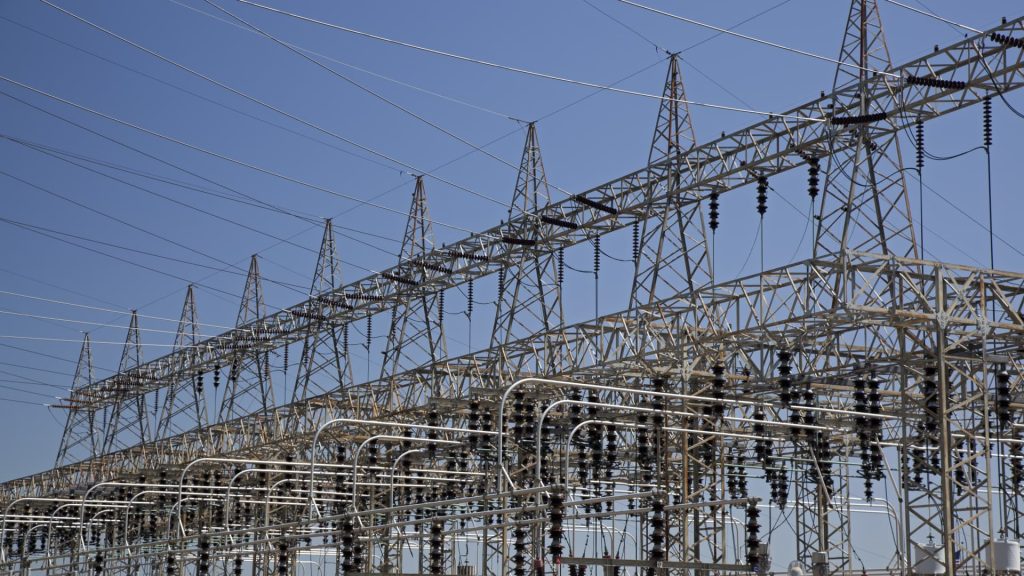Lenoir City, Tennessee, Electrical transmission equipment at the Fort Loudoun Dam, operated by the Tennessee Valley Authority.
Jim West | UCG | Universal Images Group | Getty Images
Alphabet’s Google and Kairos Power will deploy an advanced nuclear plant connected to the Tennessee Valley Authority’s electric grid by 2030, the companies announced on Monday.
TVA has agreed to purchase up to 50 megawatts of power from Kairos’ Hermes 2 reactor. It is the first utility in the U.S. to sign a power purchase agreement with an advanced reactor like Hermes 2, according to the companies.
Hermes 2 is the first deployment under an agreement that Google and Kairos signed last year to launch the startup’s nuclear technology at a commercial scale. The reactor’s output is the equivalent of the consumption of about 36,000 homes. The electricity will help power Google’s data centers in Montgomery County, Tennessee, and Jackson County, Alabama.
Google, Kairos and TVA said their collaboration will move the U.S. a step closer to deploying advanced nuclear reactors by making sure consumers are not on the hook for the cost of building the plant.
Kairos and Google will bear the financial risk associated with building the first-of-a-kind project, the companies said. TVA, meanwhile, is providing the revenue stream the plant will need to operate through the power purchase agreement.
“We think this solves the problem of making sure that consumers don’t carry that first-of-a-kind cost and risk,” TVA CEO Don Moul told CNBC. “But it also allows innovators like Kairos Power and thought leaders like Google to bring this to market.”
Hermes 2 is expected to start operating at Oak Ridge, Tennessee, in 2030. Kairos received a construction permit for the reactor from the Nuclear Regulatory Commission in November 2024. It will need to apply for an operating license with the NRC before the plant can start operations.
TVA declined to disclose how much it will pay for electricity from Hermes 2 when asked by CNBC. Kairos declined to disclose the estimated cost of the plant.
Building nuclear again
The U.S. has basically stopped building nuclear plants due to the huge cost overruns and delays that plague the industry. The last two reactors built in the U.S. at Plant Vogtle in Georgia cost $18 billion more than expected and started operations seven years behind schedule in 2023 and 2024. The project’s problems contributed to the bankruptcy of industry stalwart Westinghouse.
Startups like Kairos believe their smaller plants will prove to be faster and more affordable to build than large reactors like those at Vogtle, helping to usher in a new era of nuclear construction in the U.S. Despite these promises, utilities have been reluctant to commit to small advanced reactors over concerns about the initial price tag.
Technology companies like Google, meanwhile, are investing in advanced nuclear because they want reliable, carbon-free power to meet the demand from artificial intelligence while adhering to their environmental goals. Google has placed orders with Kairos for reactors totaling 500 megawatts of power that are targeted to come online through 2035.
Rebar is placed at the Kairos Power Hermes foundation.
Courtesy: Kairos Power
“We specifically want to help commercialize,” Amanda Peterson Corio, Google’s global head of data center energy, told CNBC. “We want to see how can we take this from something small to something bigger that we can deploy at scale. That’s really what the Hermes 2 project is doing.”
One of Kairos’ goals with Hermes 2 is to create a standardized reactor design which will help cut the cost of future deployments, CEO Mike Laufer told CNBC. Kairos will also develop the supply and manufacturing infrastructure needed to launch at scale through the construction of Hermes 2, he said.
“We’d be ready to deploy multiple reactors in series at the same sites in a very cost efficient way to deliver that power at affordable rates in the not too distant future,” Laufer said. Kairos and Google are exploring options on where future plants will be deployed, he said.
Oak Ridge, TVA nuke hub
Kairos’ technology is different than the reactors currently operating in the U.S. Its reactor design uses liquid salt as the coolant rather than light water, which allows the plant to operate at near atmospheric pressure. This means Kairos can use thinner and less expensive materials because the reactor is not under high pressure. Operating at low pressure also has safety advantages.
The 50-megawatt plant is also much smaller than the reactors in the current U.S. fleet that average 1,000 megawatts in output, which is enough to power an entire city. The Kairos reactor will increase its output to 75 megawatts when it launches on a commercial scale, Laufer said.
Hermes 2 will be deployed near Oak Ridge National Laboratory, which has a long history in nuclear science dating back to the Manhattan Project during World War II. The TVA was established by Congress during the Great Depression as a public corporation to electrify the region. The utility remains owned by the federal government.
“This kind of sets the stage for East Tennessee to really be what we see as a regional hub for innovation for nuclear construction and operation, and that’s going to be valuable for the nation as well,” Laufer said.

